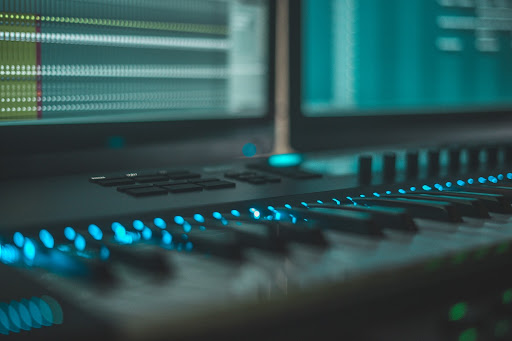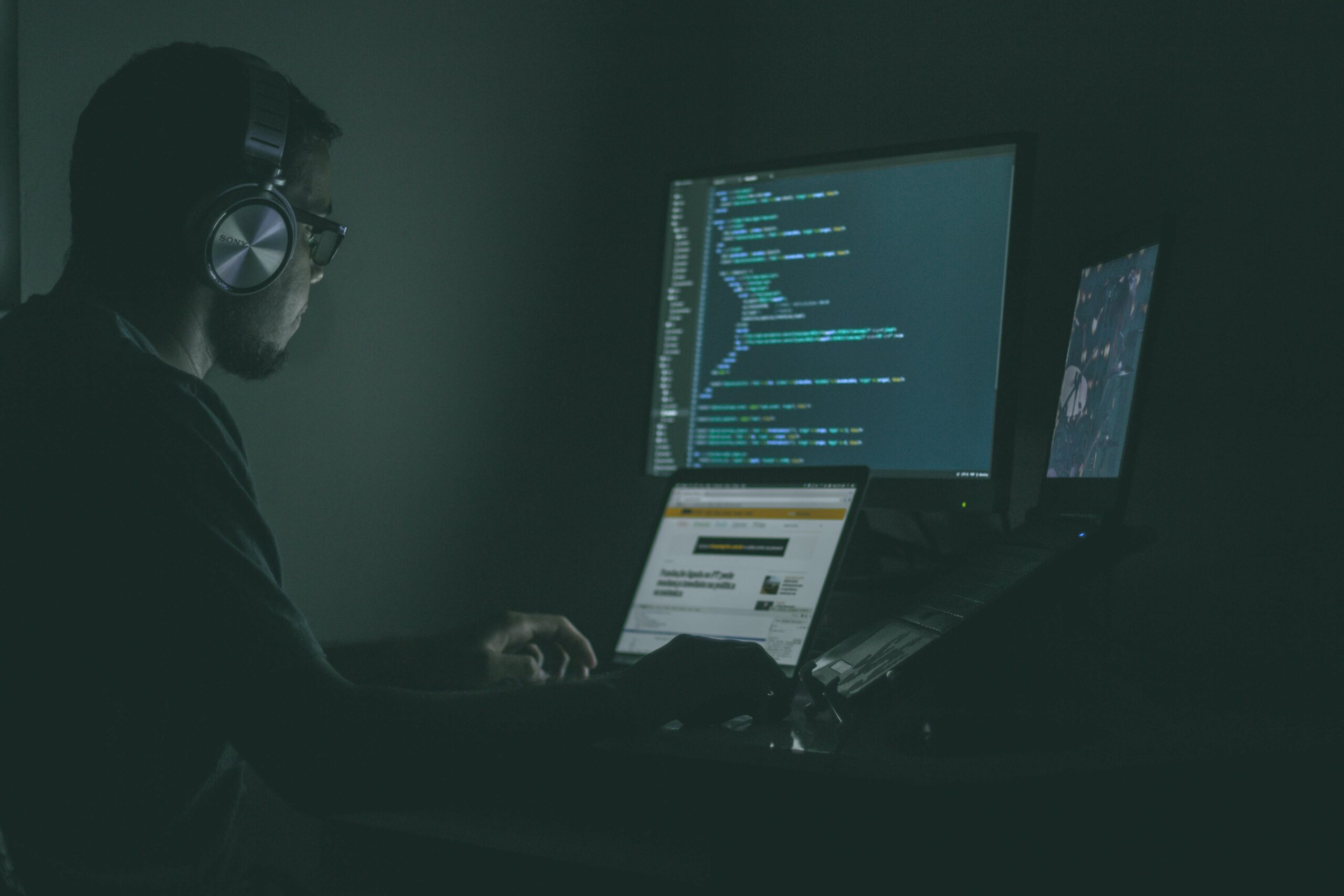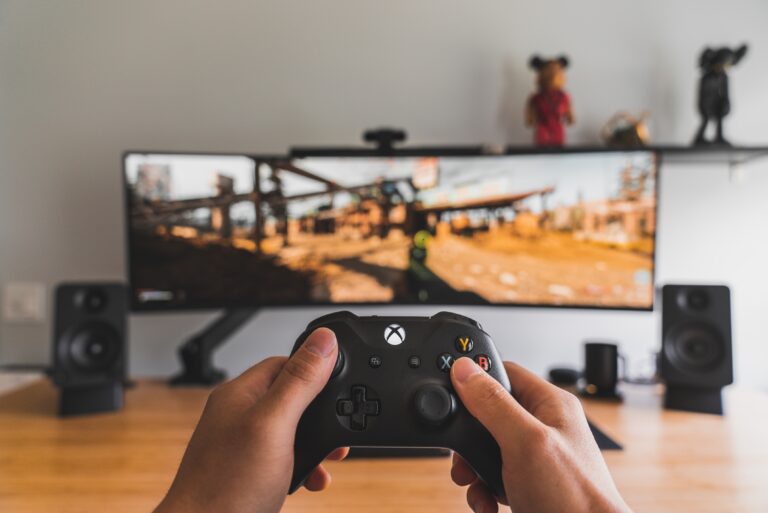“Audibly awful.”
That’s how Ballistic Moon reviews described the sound in the space RTS Cosmos Conquest. Unfortunately, mediocre audio is all too common and hampers many games.
Impactful audio adds realism, suspense, and emotional resonance to games. According to Audio Engineering Society, music in games highly impacts their enjoyment and performance.
But producing polished game audio is complex. Writing adaptive music that responds dynamically during play requires coding expertise. Crafting thousands of sound effects and UI elements demands extensive work. Licensing high-quality scores can be prohibitively expensive, especially for indie developers.
This guide aims to demystify game audio so any studio can engross players with sound. You’ll also learn how AI can create AAA-quality soundscapes on a budget. Whether looking to subtly underscore a 2D platformer or deeply immerse players in a FPS, this definitive guide has you covered.
Audio Assets for Games
Crafting a great gaming experience requires a diverse library of audio assets including sound effects, voiceover, and music. Different asset types serve distinct purposes and have unique technical considerations.
Sound effects (SFX) add realism and feedback for actions like movement, combat, UI selection, etc. High-quality SFX require recording real-world sounds and editing them. Procedural generation tools can also create unlimited unique effects by algorithmically combining audio samples and synthesis.
Voiceover and dialogue bring characters to life. Quality vocal performances demand directing skilled voice actors in studio sessions. Many games feature thousands of lines for main characters across multiple languages.
Background music sets tone and pace for different gameplay contexts. Adaptive scores that change based on player actions require composition tools and middleware to implement.
Thoughtfully crafted custom audio is key for immersion and emotion. Utilizing the right assets and technology unlocks the full potential of game sound design.

Dodging Copyright Lawsuits With Royalty-Free Audio
“Our top-selling game was just pulled from app stores due to a copyright complaint over the background music!”
Many developers unwittingly use copyrighted songs illegally. Consequences range from takedown notices to lawsuits. Carefully consider licensing to avoid issues.
Royalty-free music allows unrestricted commercial usage without paying ongoing royalties. Reliable providers like Artlist and Epidemic Sound offer curated tracks for a subscription. AI-generated music from beatoven.ai is also inherently royalty-free.
However, you should use royalty-free songs judiciously. Repetitive looped music quickly annoys players. Adaptive music based on gameplay provides more variation. Poor music implementation damaged 2012’s Kingdoms of Amalur. By selecting quality royalty-free music, you can enhance games legally without frustrations.
A Checklist For Elevating Gameplay with Tools For Custom Music
Impactful original music establishes mood, pace, and theme. The right music greatly enhances immersion in the game world. Upbeat retro chiptune tracks complement fast-paced platformers. Melancholic piano suites fit emotional narratives.
For example, eerie ambient tones in survival horror Dead by Daylight intensify during chases. Peaceful meadow melodies in Skyrim shift to climactic battle anthems when enemies approach. Such interactive scores react to player actions for greater engagement.
Powerful AI tools generate high-quality custom music with little effort. You specify parameters like genre, length, instruments and the AI composes original adaptive tracks. This allows indie developers to affordably score games.
“It’s a disaster – our immersive WWII game sounds like it’s underwater!”
That’s a common complaint from playtesters when audio is not properly implemented. Seamlessly integrating sound effects, voiceover, and music is crucial for an engaging experience. Follow this production checklist to nail your game’s sound.
First, ensure all audio assets are optimized for real-time playback. According to Tencent research, decompressing compressed audio can consume over 50% of mobile CPU time. Formats like OGG Vorbis balance quality and performance.If you’re developing on a Mac and notice slowdowns, you can learn how to delete using CleanMyMac to free up space, optimize performance, and keep your system running smoothly.
Next, take advantage of audio middleware like Audiokinetic’s Wwise or Firelight Technologies’ FMOD Studio. These tools handle spatialization, mixing, DSP, and adaptive music implementation. As composer Jack Menhorn noted, they’re “absolutely essential for professional sound.”
Next, 2ork closely with programmers to trigger events and behaviors with audio. Footstep effects for different surfaces, UI sounds for button presses, and music transitions based on gameplay all require coding hooks. Communicate needs clearly to ensure proper technical implementation.
Finally, continually test audio in context and refine via iteration. No amount of mixing and mastering will help if sound effects are poorly synced or music loops jarringly. Playtest frequently and polish issues.
With robust tools, collaboration, and iterative refinement, you can craft truly immersive gameplay audio. Just avoid common pitfalls through smart production.
Procedural music opens creative possibilities and saves time over manual composition. With the right procedural toolkit, you can score endless immersive soundscapes to elevate any game.
Mix Things Up With a Solid Audio Production Checklist
“The gunshots overpower the dialogue, making crucial story moments impossible to understand.”
Many novice developers overlook audio production, leading to amateurish mix issues. Avoid common pitfalls with this robust checklist.
Start by standardizing volume levels. Establish target loudness for Master, Music, SFX, and Dialogue. Adhere to these loudness targets across all assets for consistency.
Utilize sidechaining to prevent sounds from competing. For example, lower background music volume when dialogue plays. Automate level changes based on asset priority.
Pan stereo assets thoughtfully. Position key sounds like voices centrally. Use L/R panning to provide directional cues and width.
Apply reverb judiciously to tie scenes together. Small rooms need less reverb than large spaces like cathedrals. Automate based on game locations.
Finally, listen critically on multiple speaker configurations. Headphones, laptop speakers, surround sound each expose different mix issues.
Following this checklist ensures your game’s audio is emotionally immersive, not disjointed. Now get ready to create your sonic masterpiece!

The Epic Rise of Game Audio Technology
“Beep Boop Blip” – that’s all early arcade games could muster for sound. How things have changed. Let’s explore the monumental evolution of game audio.
The limited synthesizers of 1970s consoles like Atari 2600 could only produce primitive bloops. But textured 16-bit audio in 1990s SNES games like Chrono Trigger transported players with emotive melodies.
Cinematic scores in epic titles like Halo demonstrated music’s impact on immersion. Recent advances in sampling birthed beautifully realistic in-game instruments.
Spatial 3D audio tech like Dolby Atmos now allows sounds to fully surround players. AI tools from Beatoven.ai enable indie developers to generate polished music.
In a GDC talk, Microsoft confirmed compute advances facilitated by Microsoft Azure enable “blending between disparate pieces of music” in real-time. Streaming via Microsoft Azure permits using uncompressed audio files
Veteran composer Inon Zur remarked “The palette today is endless.” Powerful new technologies will only continue expanding the creative possibilities.
Game audio has transformed from beeps to breathtaking living scores. This evolution makes today a golden era for stunning video game soundscapes.

Unleash AI Tools for Game Music
“I don’t know how to compose music – can AI help me score my indie game?”
Yes! AI-powered solutions like Beatoven.ai generate polished adaptive soundtracks for gaming. No musical skills needed.
Simply describe the music you need like “energetic retro platformer theme” and AI composes it. Tools create unlimited unique songs through machine learning.
Leading AI researcher Lex Fridman said “AI will become essential for game music creation.” It saves time and unlocks new creative possibilities.
Whether you need an orchestral RPG soundtrack or chiptune music for a pixel art game, AI has you covered. Welcome to the future of composing game music!
Supercharge Your Audio Workflow With AI
“Composing endless music cues for our open world game is impossible!”
Procedural music tools like Aiva and Melodrive use AI to generate any number of unique songs and cues to fit your game.
Just define the genre, mood and length you want. AI handles composing and producing the music – no expertise required.
This saves massive time over manually writing scores. Automate the drudgery to focus creativity on key moments.
Cloud-based AI music services provide affordable access for indie developers. Give your game an endlessly adaptable soundtrack to match each player’s journey.
Adaptive Music for Immersion
Dynamic audio responds intelligently during gameplay for greater immersion. Adaptive music evolves based on player actions and game states, while reactive sound effects give feedback. According to Unity’s 2017 GDC talk, this interactivity creates more impactful audio.
Interactive scores transform gameplay into a rich sensory experience.
The ambient synth melodies in sci-fi adventure The Signal From Tölva subtly shift as players navigate alien landscapes. Rhythm game Audioshield generates tracks to match chosen songs. First-person horror title Duskers features adaptive music that reacts to threats.
Implementing adaptive audio requires MIDI programming or audio middleware like Wwise.
You can establish triggers and logic that flow a mix between stems based on gameplay events. Micro-scoring further tailors music in real-time by layering risers, transitions, and stings. For more insights, check out composer Leonard Paul’s GDC lecture on procedural music here. This Gamasutra post also has great tips on designing dynamic game audio. With the right tools and knowledge, adaptive music can make your game truly unforgettable.
Frequently Asked Questions About Game Audio
What are some key things to consider when selecting background music for games?
The music genre should fit the gameplay pace and theme. Adaptive music that changes dynamically based on gameplay is more immersive than fixed compositions. Varied music loops prevent repetitive fatigue.
How can I implement procedural sound effects in my game engine?
Integrating generated SFX requires audio middleware like FMOD or Wwise. These tools handle 3D spatialization, effects, mixing, and programming triggers. Some middleware is free for non-commercial use.
What file formats should I use for game audio?
Uncompressed .WAV provides highest fidelity for sound effects. For music, compressed streaming formats like .OGG Vorbis balance quality and performance. Always test formats to ensure smooth playback.
How can I optimize streaming audio performance in games?
Use efficient compressed formats. Load adaptive music stems into memory versus seeking on disk. Use longer looping samples. Prioritize position decoding and preloading. Minimize audio thread overhead from decoding.
What royalty-free licenses allow commercial use of procedural music/SFX?
Creative Commons and GPL licenses permit commercial usage of procedurally generated audio. Some tools like Amper include proprietary licenses. Read terms carefully to avoid copyright issues.
How much does procedural audio software cost?
Prices range from free (Audacity) to ~$20/month (Aiva, sfx.io) to thousands (pro-grade generative music tools). Cloud-based solutions are more affordable for indies.
Can I modify procedurally generated audio?
Yes, generated music stems and SFX can be edited using DAW software just like any recorded audio clip. Tweak compositions, loop points, apply effects, etc.
Conclusion
Implementing audio well requires planning. Follow best practices around adaptive music, optimization, asset production, and technical integration. But the payoff is worth it – great sound transports players into believable worlds.
Especially leverage leading AI tools like Beatoven.ai to generate polished music, sound effects, and dialogue at scale. AI unlocks creativity by automating drudgery – a game changer for indie developers.
The future of game audio is brighter than ever thanks to new technology. Now is the time to enhance your next title with fresh game soundtracks and procedurally generated sound that adapts in real time. Let amazing audio increase engagement and bring your virtual worlds to life!
Footnotes and Relevant Resources For Video Game Developers Looking For Royalty-Free Music
GDC Conference presentations – Cutting edge game audio talks
Music Business Worldwide – Reports on music industry trends
Gamasutra – Game dev news including audio tech
IFPI music industry reports – Data on music consumption

